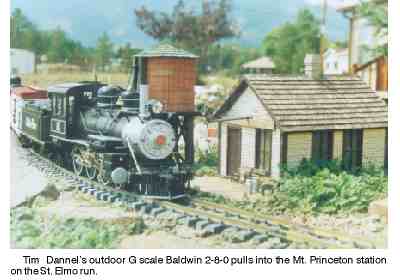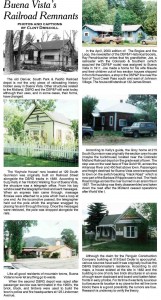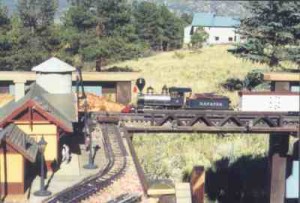Article by Clint Driscoll
Transportation – January 2004 – Colorado Central Magazine
“The point is, people like you and me are just dilettantes, layabouts if you like, these people really care!”
— Ford Prefect in The Hitchhiker’s Guide to the Galaxy by Douglas Adams
THERE IS NO MORE AVID a hobbyist than a railroad buff. In fact, railroad workers refer to them as “foamers” because they tend to foam at the mouth whenever they see a locomotive or discuss their favorite topic. A special group of foamers (a term most buffs take pride in), the Denver, South Park and Pacific Historical Society, met for their fifth annual convention in Leadville this past Labor Day weekend. They came from as far away as America’s east and west coasts and even England’s East Anglia to talk about and retrace a section of their favorite railroad.

According to Cliff Mestel, society treasurer and owner of four specialty model railroad mail order businesses in Johnson Village, there are about 12 to 15 members in the upper Arkansas Valley and more in Gunnison, Frémont and Custer counties. Many are hard-core modelers but there are also those with interests in railroad history, photography, book, map and memorabilia collecting or restoration of actual buildings, locomotives and rolling stock. Mestel, like many others, combines a number of interests and is probably one of the few people in the country who keeps an antique D&RG narrow gauge freight car in his front yard.
Society members specialize in the DSP&P narrow gauge line along with its later incarnations as the Denver, Leadville & Gunnison and the Colorado & Southern. Many members also study the Denver & Rio Grande, the Midland, — even though it was standard gauge — and smaller, out of area lines like the Colorado Central, the Gilpin Tram and the Argentine Central in Clear Creek and Gilpin counties. What unites them is an abiding interest in the accurate recording and/or modeling of railroad history.
The attraction seems to be a vicarious participation in the ingenious engineering and incredible labor that was needed to bring the lines into the mountains and keep them operating in our harsh, high altitude environments. There is also a fascination with the specialized locomotives such as the Mason Bogie that employed a system which permitted the leading and driving wheels to swivel right or left as a unit independent of the boiler and cab, thus allowing tighter turns.
“Mostly we deal with small, obscure narrow-gauge enterprises that were basically failures,” said Mestel, “But glorious failures.”
“I model a part of the country and a time in history when I would have liked to live,” added Dan Windolph, whose layout includes the Bogies and Baldwin 2-8-0 locomotives climbing to the Alpine Tunnel and its attendant buildings.
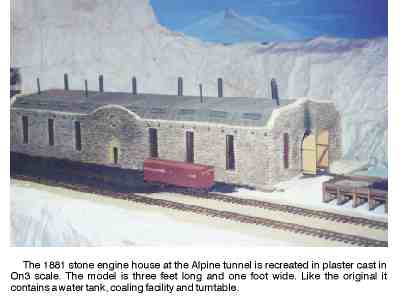
WHILE NOT ALL MEMBERS have layouts, modeling is of prime interest and that means accuracy down to the gnat’s behind. There are no “ready to run” Christmas sets among this group. The layouts are literally built from the ground up and include roadbed, laser-cut ties and individually spiked rails. The rolling stock and structures are built from original plans and meticulously painted using historical photos as guides. The scale detail of the brass locomotives, many painstakingly built from raw stock to factory specifications, recreate the DSP&P locomotives’ distinctive beartrap stacks and cab interiors.
“If I won the lottery I’d buy one a’ them football domes and fill it with my model railroad,” said an attendee from Connecticut.
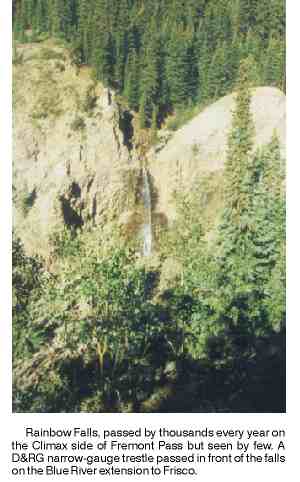
Those members not involved in modeling still crave the details and spend as much time as possible retracing the routes on foot, by four-wheel drive and even by air. What they find in their excursions they compare with photos and vintage USGS maps so they can say with certainty where a depot stood, where a vanished spur line ran to a mine or mill, or how a present-day road bridge once served the railroad.
One attendee proudly pointed out that a photo of a rotary snow plow in action displayed in a well-known railroading book was mislabeled as working Boreas Pass when it actually was clearing the High Line on Frémont Pass below Climax. He proved it by comparing ridge lines in the photo with pictures he took while riding the Leadville, Colorado & Southern Railroad.
All the meticulous attention to routes and equipment, to records, dates. and personnel may seem like a bit much to the casual observer. Certainly modeling is not to everyone’s taste. But the members of the DSP&PHS and others like them are preserving the industrial history of the frontier West for the many newcomers who seldom question the reason for a town’s existence or why a certain county road has such an easy grade for bicycling.
“It’s important to discover and preserve this knowledge,” said Tom Klinger, an antique photo collector and photographer/print maker from Wheat Ridge, Colorado.
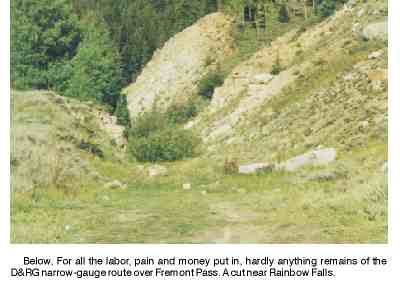
So let’s hope they keep on pursuing the details.
Clint Driscoll lives in Buena Vista. He studies local railroad and mining history but can’t really be counted as a foamer, he’s more a layabout.


